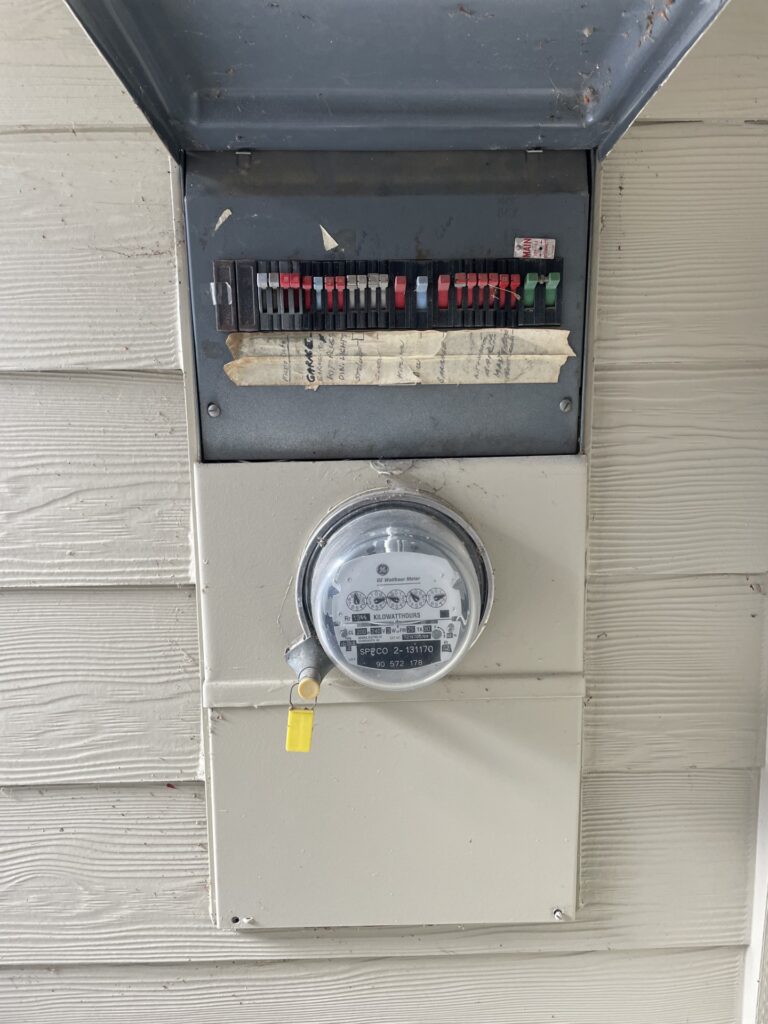The Dangers of Zinsco and Sylvania Electrical Panels in Residential Homes

In the realm of residential electrical safety, certain brands of electrical panels have garnered a notorious reputation for their reliability issues and safety hazards. Among these, Zinsco and Sylvania panels stand out due to their historical problems, which can pose significant risks to homeowners. Here’s an in-depth look at why these panels are considered dangerous:
**Background on Zinsco and Sylvania:**
– **Zinsco Panels:** Originally manufactured by Zinsco Electric, these panels were popular in the 1970s, especially in the Western United States. After Zinsco was sold to GTE-Sylvania in 1973, the panels continued to be produced under names like “Zinsco-Sylvania” or “GTE-Sylvania-Zinsco.”
– **Sylvania Panels:** Not all Sylvania panels are problematic, but those linked to the Zinsco design heritage share the same safety concerns. These panels are identified by colorful breaker handles or specific branding.
**Key Dangers:**
1. **Breakers Failing to Trip:**
– One of the most alarming issues with these panels is that the circuit breakers often fail to trip when they should during an overload or short circuit. This malfunction occurs because the breakers can melt to the bus bar, preventing them from disconnecting the circuit. As a result, there’s a high risk of electrical fires as the excess current continues to flow unchecked.
2. **Overheating and Melting:**
– The design flaws in these panels include loose connections at the bus bars, leading to arcing and overheating. Over time, this can cause the breakers to melt onto the bus bars or even explode due to the intense heat, posing a direct fire hazard.
3. **Aluminum Components:**
– Many of these panels use aluminum parts, which are prone to corrosion and have a shorter lifespan compared to copper. Corrosion can lead to poor electrical conductivity, further exacerbating the risk of overheating and failure.
4. **Age and Outdated Design:**
– These panels are now decades old and do not meet contemporary safety standards. Their design does not account for the increased electrical demands of modern homes, which can push these already compromised systems beyond their limits.
5. **Insurance and Safety Concerns:**
– Home insurance companies are often aware of the risks associated with Zinsco and related Sylvania panels. Some insurers may refuse to cover homes with these panels or might require their replacement as a condition for coverage.
**Why Replacement is Advised:**
– **Safety:** The primary concern is the prevention of electrical fires and ensuring the safety of occupants.
– **Reliability:** Even if these panels have worked for years without issues, there’s a latent risk that could manifest at any time.
– **Property Value:** Updating to a modern, safer electrical panel can also positively impact the resale value of a home.
**Recommendations:**
– **Inspection:** If you suspect you have a Zinsco or problematic Sylvania panel, it’s crucial to have it inspected by a licensed electrician. They can confirm if the panel is indeed hazardous and might suggest an infrared scan to detect overheating spots not visible to the naked eye.
– **Replacement:** If confirmed to be a Zinsco or similar Sylvania panel, replacement is highly recommended. Only a professional should handle this task due to the complexities and dangers involved.
– **Documentation:** Keep records of the inspection and replacement for insurance purposes or to prove compliance with safety standards to potential buyers or current insurers.
In conclusion, while Zinsco and certain Sylvania panels might still be operating, their history of failure and the associated risks make them a ticking time bomb in many homes. Homeowners with these panels should prioritize their electrical safety by considering an upgrade to modern, UL-listed equipment. This not only protects your home and family but also preserves your property’s integrity and value.

